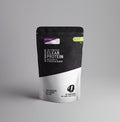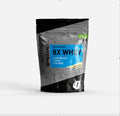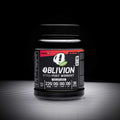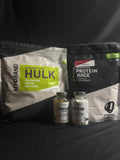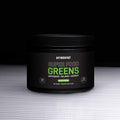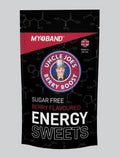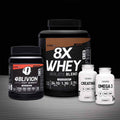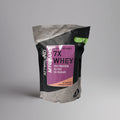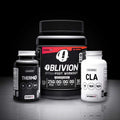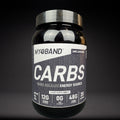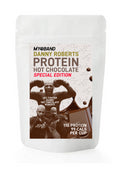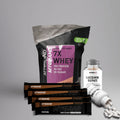4 Reasons You’re not Gaining Muscle Mass
Posted by PROPROTEIN LTD ADMIN

While most talk about losing weight, there’s you hard at work trying to gain it! You’re a categorical “hardgainer” — then envy of everyone who wish they could “get away with” eating as much as you. Yet, if only they understood your struggles and frustrations.
One week your weight goes up a little, your workouts are feeling great, and you’re looking pumped-up and swole. Then next your weight plummets, the pumps have gone, and you feel like you’re back at square one. Here are four big reasons and solutions to help break through those barriers.
Stop doing too much cardio
Heart health and work capacity are important, and cardio and conditioning workouts undoubtedly help. But, when your goal is to gain weight and build maximum muscle then you need all the calories you can spare. Additionally, there are certain biochemical pathways that are activated during cardio-type exercise that can literally “shut off” your ability to build muscle.
We’ll spare the heavy science lesson here, but according to research it’s well established the Mammalian Target of Rapamycin (mTOR) is a key signalling pathway regulating exercise and nutrient‐induced alterations in muscle protein synthesis.
It's very hard to gain muscle without mTOR being activated, or if it’s being shut off all the time. Whilst lifting weights activates mTOR, cardiovascular training shuts it off by activating something else called AMPK. Once you flip that AMPK switch then it’s hard to turn mTOR back on, thus affecting your ability to gain size and strength.
There’s a reason why most successful physique athletes limit cardio in their off-season to the bare minimum, or stick to things like weighted carries and sled drags as a form of cardio that uses heavy resistance. If you’re a hardgainer then do the minimal amount of cardio you can get away with, and largely for health reasons. Once you’ve built some considerable muscle then you can start introducing more cardio and conditioning workouts to help unveil what you’ve now built.
Quit the long and gruelling workouts
We hear all the time about training smarter versus harder, but what exactly does that mean? Besides selecting exercises based on your unique body structure and history, it also means training to stimulate rather than annihilate your body. The best program for you will depend on a lot of things, but some rules when it comes to building muscle are universal.
Every time you exercise you’re sending a signal to your body to adapt. You need to be sending the right signals (via resistance exercise) to build bigger and stronger muscles. That only happens when you’ve provided your body with the right stimuli to adapt, and with consistent effort over time. Unfortunately, feeling tired or spending hours in the gym has nothing to do with the message you’re trying to send your body, and more often than not sends the wrong message.
You should instead understand that there’s a training volume “sweet spot” that varies person-to-person, where oftentimes less training volume can give you greater results — while your gym buddy might build maximum muscle doing 20 sets per muscle per week (e.g., 20 sets of chest spread throughout the week), you might respond best to as little as 6 sets per muscle per week.
Track your workout performances and body stats to identify trends in what’s working best, and try to never spend more than 50-60 minutes in the gym at a time. Excessive training can affect the stress hormone cortisol as well as other key hormones. The results of a study in the British Journal of Sports Medicine showed that athletes who trained excessively had a reduced testosterone level by around 30% below the normal range!
Get in the gym, get in the zone (a good pre-workout helps!), and train to stimulate NOT annihilate. If you’ve been training a lot and feel your testosterone levels are suffering then a good ZMA supplement can also help.
Eat more calorie and nutrient dense foods

There’s no arguing that you need to create a calorie surplus in order to gain weight — burn off fewer calories than you take in. Whilst it’s true that some may have a faster metabolism than others, and burn more calories at rest, this simply means you need a higher calorie intake. If you’re not gaining weight then you’re not in an energy surplus. Full stop. You NEED to eat more, and that’s the hard truth of it.
To ensure you’re getting the right kind of calories and in the correct amounts then estimate your calorie needs and start tracking right away. Simply ask your target body weight then use the following equation recommended by physique coach, Gareth Sapstead, as a starting point:
Target body weight x (11‐13 + average total weekly training hours)
If you’re a slow metaboliser use 11, or for a fast metaboliser multiply by 13. Any weights, cardio, vigorous activities (sports, farming, hiking etc.) count towards your weekly training hours. It’s forgetting factors like this that often cause hardgainers to underestimate their energy intake and limit weight gain.
Have you worked out your target calories yet? Great! Now hitting that calorie goal seven days a week should be your top priority. If you’re struggling then you should include some calorie dense foods for good measure. Nuts, nut butters and tahini, healthy oils for cooking and dressings, whole eggs, and higher fat cuts of meat (preferably grass-fed meat if you can afford it) are all good options. Challenging yourself to eat an entire avocado every day by adding it to meals, or even blending it in to smoothies will add an extra 300 calories to your diet. It really can be that simple if you pick the right foods. A mass gainer protein shake like Hulk is also an easy and convenient option.
Get the right macronutrients
What you can monitor you can manage - if you’re not tracking your protein, fats and carbs then you won’t know if you’re coming anywhere near close to your targets. Gaining weight isn't merely a case of training harder and eating more. You need to be eating the right things at the right times, and fuelling your body with the nutrients it needs to grow. A grass-fed steak with a side of sweet potato and broccoli will do a heck of a lot more for your physique than would a 12 inch pizza with the same calories!
We’ve already established how many calories you should be aiming for to start, now let’s establish your macronutrient goals:
- Protein (4 kcal/g) – Use a baseline of 1g of protein every pound of target body weight. So if your target is 160lbs then aim for 160g of protein every day.
- Fat (9 kcal/g) – Aim for 0.3-0.6g per pound of target bodyweight, depending on individual preference and tolerance. If your target is 160lbs that’s 48-96g of fats per day, from a variety of sources such as nuts, avocados, olive oil and oily fish.
- Carbohydrates (4 kcal/g) – Whatever calories are left over should come from carbohydrates. If for example you need 2500 kcal a day with a target weight of 160lbs, that’s 640 kcal of protein (4 kcal per gram of protein) and at least 432 kcal of fats (9 kcal per gram of fat). This means of the 2500 kcal, you now have 1428 kcal left to use on carbohydrates. Since carbohydrates have 4 kcal per gram that would mean 357 grams of carbohydrates a day to start.
Know your target calories and macronutrients and compare them to what you’ve been been eating. If you’ve been struggling to gain weight and your numbers are nowhere near what they should be then you know where to start.
Author: Gareth Sapstead
TAGS:
